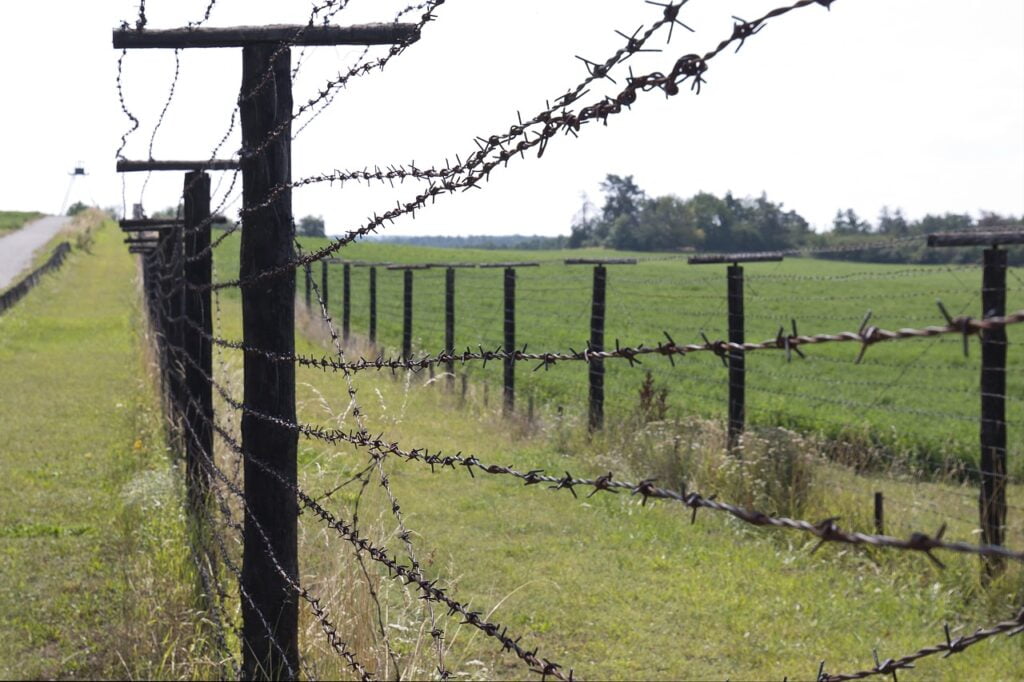Introduction:
Throughout the turbulent years of the Cold War, the phrase “Iron Curtain” was frequently used. It was first used by British Prime Minister Winston Churchill in 1946 and quickly came to represent the ideological, political, and geographical separation of Eastern and Western Europe. We’ll look at the definition of the Iron Curtain, its history, and its significant effects on the world throughout the Cold War era in this blog post. Join us as we explore the history of this figurative “curtain” that for many years divided cultures and ideologies.
The Origins of the Iron Curtain
The origins of the Iron Curtain can be seen in the years immediately following World War II. Here are some crucial considerations: Europe was divided as a result of World War II.

World War II and the Division of Europe
The major Allied powers, the United States and the Soviet Union, emerged as superpowers as a result of the devastation caused by World War II to Europe. Germany’s separation into East and West served as an early prototype for the Iron Curtain.
The Fulton Speech
The phrase “Iron Curtain” was originally used in Winston Churchill’s well-known speech at Fulton, Missouri, on March 5, 1946. Churchill expressed worry about the need to prevent Soviet expansionism in Eastern Europe.
The Iron Curtain’s Physical and Ideological Aspects
The ideological and material elements of the Iron Curtain combined to form its distinctive character.
Physical Obstacles Eastern and Western Europe were physically divided by walls, fences, and heavily guarded borders. East and West Berlin were divided by the Berlin Wall, which was constructed in 1961 and served as a symbol of this split for almost three decades.

Ideological Divide
The Iron Curtain symbolized both a physical and an ideological divide. While Eastern Europe was influenced by the Soviet Union and adopted communism and state control, Western Europe embraced democracy, capitalism, and individual freedoms.
Curtailing Information
There were strict controls over the information flow behind the Iron Curtain. Eastern Bloc nations experienced widespread censorship and propaganda, which limited access to foreign ideas and information.
Impact on the Cold War
The Cold War and international geopolitics were significantly impacted by the Iron Curtain:
The Cold War Escalates
The Cold War began as a result of the Iron Curtain heightening tensions between the US and the USSR. For global hegemony, both nations engaged in a weapons race and a conflict of ideologies.
Proxy Wars
Proxy wars in other regions of the world were driven by the split of Europe. Wars like the Vietnam War and the Korean War were viewed as frontlines in the struggle between the East and the West.
The Space Race
With the Space Race, the rivalry between the superpowers expanded into outer space. A important turning point was the Soviet Union’s 1957 launch of Sputnik.

The Fall of the Iron Curtain
The Iron Curtain was never meant to remain indefinitely. A succession of occasions in the late 1980s and early 1990s contributed to its downfall:
Perestroika and Glasnost
Perestroika (restructuring) and glasnost (openness), two reforms launched by the Soviet leader Mikhail Gorbachev, sparked political and social change within the Soviet Union and its satellite republics.
The Iron Curtain: Revolutions in Eastern Europe
Communist governments were overthrown by uprisings and rallies in nations including Poland, Hungary, and East Germany. On November 9, 1989, the Berlin Wall came down, signifying the end of the divide.
Reunification of Germany
An important step towards the fall of the Iron Curtain was the 1990 reunification of East and West Germany.
Conclusion
The barrier between two opposing ideologies and superpowers was symbolized by the Iron Curtain, which served as a distinguishing characteristic of the Cold War era. Its influence on world politics, proxy wars, and the collective psyche of humanity cannot be understated. However, its final demise and the unification of Europe are proof of the desire for liberty and unity in the human spirit. The Iron Curtain may have been a historical event, but its effects are still felt today, serving as a reminder of the value of diplomacy and the pursuit of peace.

